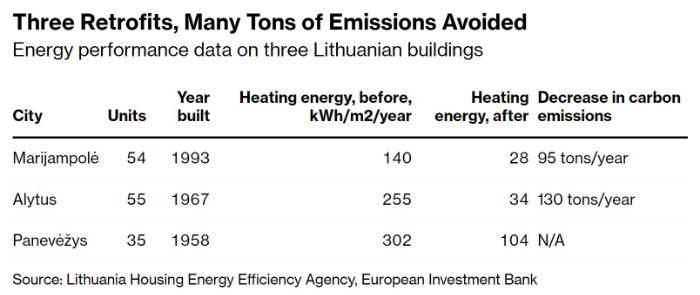In short:
- Hurricane Ian could reach Cat 4 by Wednesday — Tampa might see a near-historic storm surge.
- The average US heating bill is expected to rise 17% this winter.
- Atlantic Canada will likely see more storms due to climate change.
National Preparedness Month Challenge
Each Tuesday and Friday throughout September, the news roundups will feature a section of TP’s beginner’s checklist and introduce a conversation topic or a challenge to work on. After reading the highlighted section in the roundup, follow the instructions, and join us on Discord to discuss and get support. Read the introductory post and the previous topic here.
Today’s topic: Share and recruit!
Prepping is more effective — and more fun! — when you share the responsibility with your friends, family, and neighbors. It’s like a multi-level-marketing scheme, except everyone wins!
Some old-school preppers followed too much of a Lone Wolf mentality, where they kept everything secret and assumed they’ll traverse the wastelands alone with their shotgun and trusty dog while everything else collapses around them.
Things just don’t work that way. During the Great Depression, for example, studies show that areas with higher “community mindsets” fared much better than areas where people tended to go it alone.
You clearly don’t want to broadcast your prepping to people you don’t know, whether in the form of public social media posts or obvious “flags” around your home. Don’t paint targets on yourself or your stuff when an emergency hits.
But family, friends, neighbors, and coworkers are all potential recruits. Not only will you feel good about helping others see the light, you’ll be better prepared the more of a “buffer” you have around you.
For the challenge:
1. Read about why and how to talk about prepping with your inner circles.
2. Choose one or more of the following:
- Help at least one person in your day-to-day life (family member, friend, co-worker, neighbor) be a little more prepared.
- Meet other like-minded folks in your community through local training — it may even lead to creating or joining a “resilience circle” or prepper mutual-aid group. Community Emergency Response Team (CERT) courses are a free and popular example. You can just go for the class or sign up to be a community volunteer that’s activated during a crisis.
- Use our free kit builder to send links of pre-populated gear to your network. For example, you could send the URL to this first aid kit to your neighbors as a non-threatening or non-weird way to help someone ease their way into preparedness.
Bonus reading: A gracious “welcome to the community!” is better than “I told you so!”
2. Join us on Discord anytime after 12 pm ET in the #national-preperadeness-month channel for discussions and support. If you’re not on Discord, feel free to comment below.
Economy, energy, supply chain
Atlanta Fed president believes the Fed can still engineer a ‘soft landing.’ The labor market is creating lots of jobs each month, and this “positive momentum” might cushion the impact of higher interest rates. According to Bostic, some of the bottlenecks that have caused higher prices are starting to ease. Here’s the full interview.
Russia and Germany are facing recession while the global economic outlook darkens. The Organisation for Economic Co-operation and Development (OECD) latest prediction puts Germany in recession in 2023, and the eurozone’s inflation to average 6.2% next year.
India is trying to turn itself into a semiconductor giant. The government has looked to woo foreign chipmakers and is planning to build a $3 billion manufacturing facility in India. The upcoming plant will be making older generation chips, i.e., trailing-edge semiconductors.
USDA is investing $2.8 billion in ‘climate-smart’ agricultural projects. The Partnerships for Climate-Smart Commodities pilot aims to cut methane emissions, improve soil quality, and sequester carbon. It also creates market opportunities for ranchers who practice sustainable grazing and land management. Investing more and changing production could make agriculture a carbon sink, scientists say.
Update: The FDA investigated the ongoing baby formula shortage. Here’s what it found.
US heating bills are expected to rise this winter, and less federal assistance is available. Roughly 20 million American households — or 1 in 6 families — are behind on utility bills. Here is how much heating costs are supposed to rise:
- Average: 17%.
- Heating with natural gas: 34%.
- Heating with oil: 13%.
- Heating with electricity: 7%.
A few ways to reduce heating costs are mentioned in the article:
- Turning the thermostat down to 67 F (19 C).
- Bundling up if cold.
- Using electric blankets both in the living room as well as in the bedroom.
- Using space heaters.
If you need help paying heating bills, here is the link to the Low Income Home Energy Assistance Program (LIHEAP), which provides federally funded assistance to reduce the costs associated with home energy bills, energy crises, weatherization, and minor energy-related home repairs. More on LIHEAP from Benefits.gov.
Lithuania is leading Europe’s green-building retrofit efforts. Reducing energy consumption by improving building performance is the cornerstone of the European Green New Deal. Some retrofits led to a reduction of 80% in the cost of heating one of the buildings from 140 kW-hours to 28 kW-hours. The EU wants to scale up Lithuania’s success. Retrofits included: new windows and insulation, solar and geothermal heating systems, and all-weather glazed balconies.

UK EV charging costs are up 42% since May, with prices nearly the same as petrol. Even with the hike in domestic electricity costs, running an EV is supposed to be considerably cheaper than a petrol or diesel car.
Study: Mining is necessary for a clean energy future. It also destroys (tropical) forests.
Hurricane Ian could reach Cat 4 by Wednesday — Tampa might see a near-historic storm surge
Hurricane Ian created power outages in the Cayman Islands, and 50,000 people evacuated Cuba ahead of the storm. Cuba should watch for flash floods, life-threatening storm surges, hurricane-force winds, and mudslides.
Ian is rapidly intensifying and could reach Cat 4 by Wednesday:
.@AccuWeather forecasters say #Ian is expected to miss most of Cuba's high, mountainous terrain that often disrupts tropical systems. This will allow the storm to become a powerful Category 4 hurricane by Wednesday: https://t.co/Z8p8w3DXJY pic.twitter.com/kdBZfJmJOJ
— Breaking Weather by AccuWeather (@breakingweather) September 26, 2022
In a worst-case scenario, the storm could stall near Tampa for over 24 hours:
12z GFS forecasting the absolute worst case scenario with #Ian making landfall near Tampa at/near major hurricane status and then stalling for over 24 hours near the area.
This would bring cataclysmic surge, massive rain totals and subject the area to extreme wind damage. pic.twitter.com/xo130l7MJS
— Colin McCarthy (@US_Stormwatch) September 26, 2022
Life-threatening storm surges and winds are expected. The last hurricane making landfall in Tampa Bay was in 1921:
Life-threatening storm surge associated with Hurricane Ian is possible along the Florida west coast beginning late Tuesday. Residents in these areas should listen to advice from local officials. As forecasts may evolve, visit https://t.co/0BMJEA5Wz0 for the latest on #Ian. pic.twitter.com/idIpTbKTYN
— NHC Storm Surge (@NHC_Surge) September 26, 2022
Here’s why a storm surge can be the deadliest part of a hurricane:
Here’s how to use the Know Your Zone map, which identifies areas under evacuation:
🌀 Thank you to @weatherchannel for this great info on how to use our Know Your Zone map!
📍 Knowing evacuation zones ahead of #Ian helps residents better understand orders from local officials & make informed evacuation decisions. Find your zone – https://t.co/5C0Wq9aHaj. pic.twitter.com/TlbCLmTVYH
— FL Division of Emergency Management (@FLSERT) September 26, 2022
Huge traffic jam from people trying to leave Tampa. Tip: Get ready your BOB/evacuation bag and fill up your car tank well ahead of the storm; this way, you’ll be ready to hit the road as soon as you need to evacuate and have a chance to beat the worst of the traffic:
…BREAKING…
Video of I-4 COMING OUT OF #TAMPA JAMMED WITH CARS HEADING EAST via FLDOT 10PM AT NIGHT! pic.twitter.com/wd6L0lc6zZ— Mike Masco (@MikeMasco) September 27, 2022
Possible impact after landfall:
After slamming Florida, #Ian's impacts will be far from over in the United States. https://t.co/2PP9RiuNwO pic.twitter.com/hCDiYKQgNu
— Breaking Weather by AccuWeather (@breakingweather) September 26, 2022
See the eye of the storm from space (at about 0:22):
The International Space Station just flew directly over #HurricaneIan, passing about 258 miles over the strengthening storm: https://t.co/9qeFVn9Lsn pic.twitter.com/YPixCr9IyI
— Brian Lada (@wxlada) September 26, 2022
Resources:
- Know Your (evacuation) Zone map.
- Live updates from AccuWeather.
- National Hurricane Center’s latest key messages.
- FloridaDisaster.org
- How to survive the hurricane.
- How to prepare hours before a hurricane hits.
- How to prepare for hurricanes that are days away.
Climate change, environment, extreme weather
Super Typhoon Noru hit the Philippines, killing at least eight and displacing thousands of others. The storm is now heading for Vietnam with wind speeds of up to 183km (114 miles) per hour:
After striking the Philippines this past weekend, Typhoon #Noru is now headed for #Vietnam. https://t.co/9QQqmkEnyz pic.twitter.com/ttVyl0IlUR
— UW-Madison CIMSS (@UWCIMSS) September 26, 2022
At least eight homes in Newfoundland have been swept away by Hurricane Fiona, and hundreds of thousands are without power.
Over 730,00 Puerto Ricans are still without power, and about 260,000 without water a week after Fiona. Power could be restored to some customers by the need of the month but estimates could change.
Climate change means Atlantic Canada will see more frequent storms. Hurricanes don’t usually maintain high wind speeds as they approach Atlantic Canada. But ocean warming may be linked to the increasing intensity of storms like Fiona.
Study: Wildfires are burning away snow in the American West. Wildfires are burning more high elevation areas and dramatically impacting the West’s snowpack. Snow in wildfire-burned areas contains less water and is melting 18 to 24 days earlier than average. The researchers’ findings may impact how water is managed in the future.
The US Senate passed the Kigali Amendment, an international agreement designed to phase down hydrofluorocarbons, or HFCs, and shave off 0.5 C (0.9 F) of global warming by the end of the century.
A good article on the rise of resilience centers amid extreme heat in the US. Emergency shelters don’t adequately protect residents. Enter community spaces – centers built to withstand climate disruptions and offer long-term preparedness.
Health
CDC no longer requires universal masking in some nursing homes and hospitals.
STDs are surging in the US. Syphilis rates shot up by 26%, “the highest rate of syphilis since the Truman administration.” Rates of congenital syphilis — when babies become infected while in the womb — also saw an alarming increase of 24% in 2021. HIV cases rose by 16%, gonorrhea by 2.8%, and chlamydia by 3%.
Op-Ed: Climate change is nudging us toward the next pandemic.

You are reporting the comment """ by on